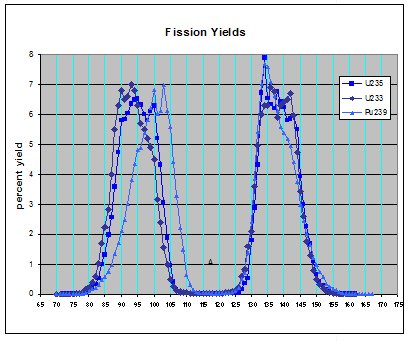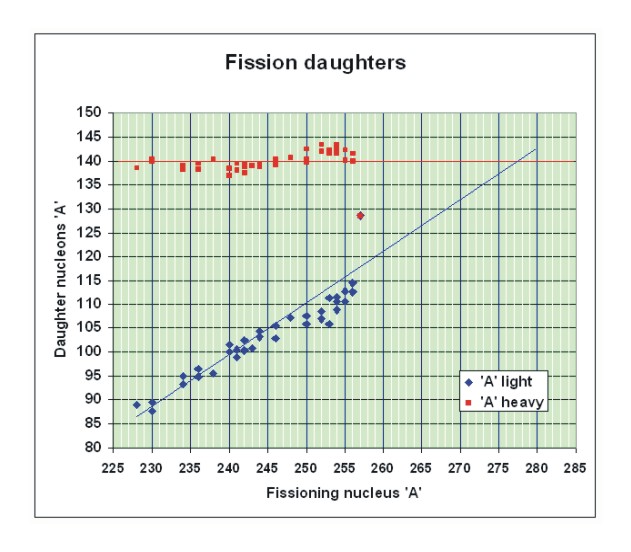
Illustrated Asymmetrical Fission
This section consists of a set of illustrations depicting what happens during the fission of U235.
The two ends of the U235 nucleus are not balanced, one end has one more neutron than the other. The end that has one less neutron wants to capture a neutron to establish nuclear balance.
Balance is established when a neutron carrying extra energy in the form of its velocity is captured by the deficient end of the nucleus. The extra energy from neutrons velocity starts the long ends of the newly created U236 nucleus to vibrate. Because the ends of the uranium nucleus are now balanced the vibration is harmonic. The result of the harmonic vibration is the long ends of the new U236 nuclei break off.
The Results Is Fission!
ZOME Model of U235

Add a Neutron
A neutron is added to the nucleus of U235 to form U236.
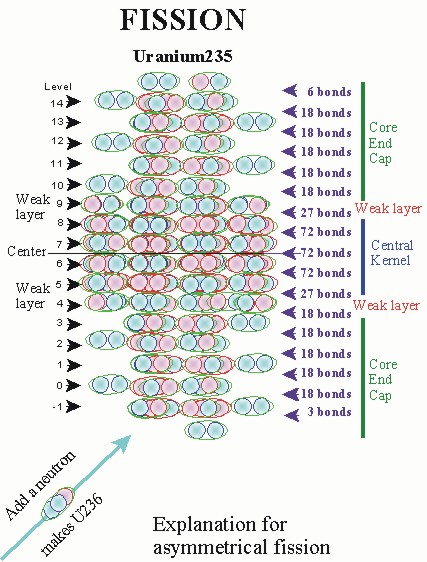
Harmonic Vibration
The ends of the uranium nucleus are balanced and the excess energy from the neutron starts harmonic vibration in the now identical and balanced long ends of the new U236 nucleus.
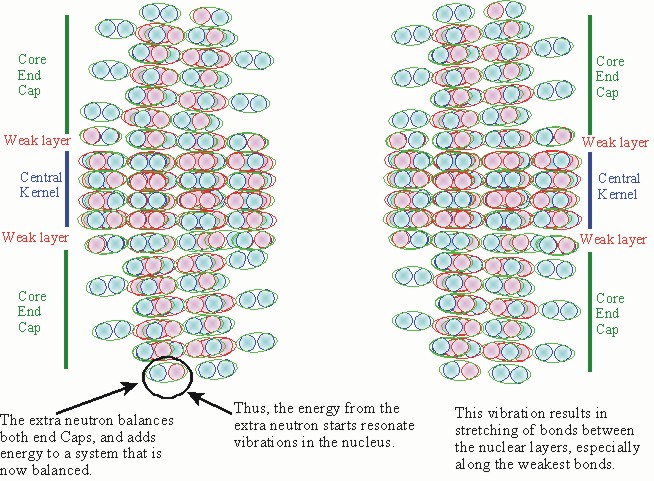
Fission Starts
The harmonic vibration results in the ends of the uranium 236 breaking off. At this momentary instant the nucleus exists as three pieces, the central kernel and two end caps. The central kernel will be the same regardless of the original nucleus thus it forms the heavier daughter product. The heavier the starting nuclei the longer the ends and thus the heavier the lighter daughter product will be. Thus the weight of the lighter daughter is proportional to the weight of the beginning nuclei.
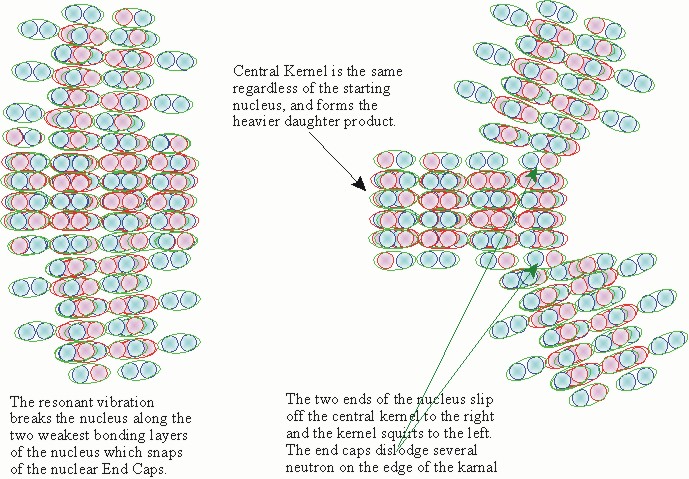
Fission Continues
At the next instant the central kernel moves in one direction and the two end caps move in the other. The ends are sufficiently close that the vibration momentum of the two end caps have an inward directional component to their collapse.
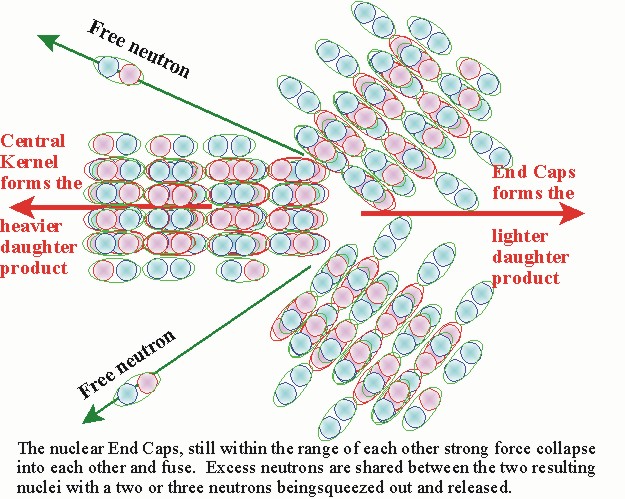
Fusion Phase I
The ends momentum and the strong force bring the two ends together. As the two ends merge, they begin to release fusion energy.
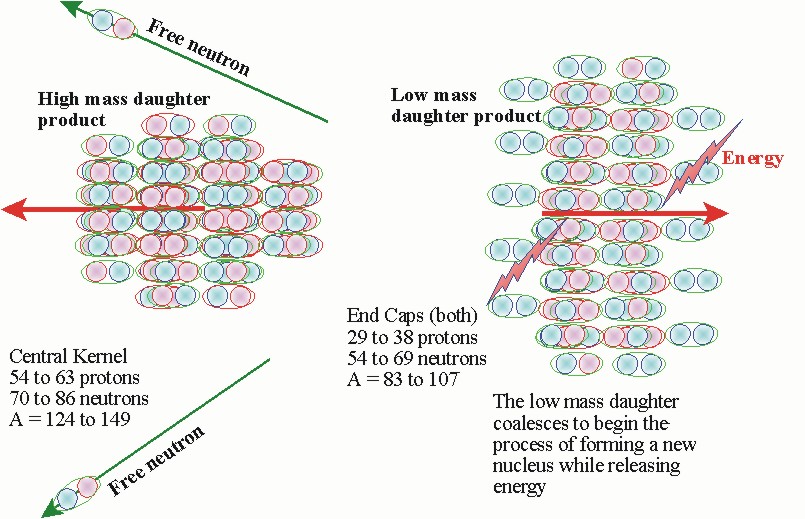
Fusion Phase II
As the two end fuse and collapse together into a tighter and more compact nuclear structure they release addition energy of fusion.
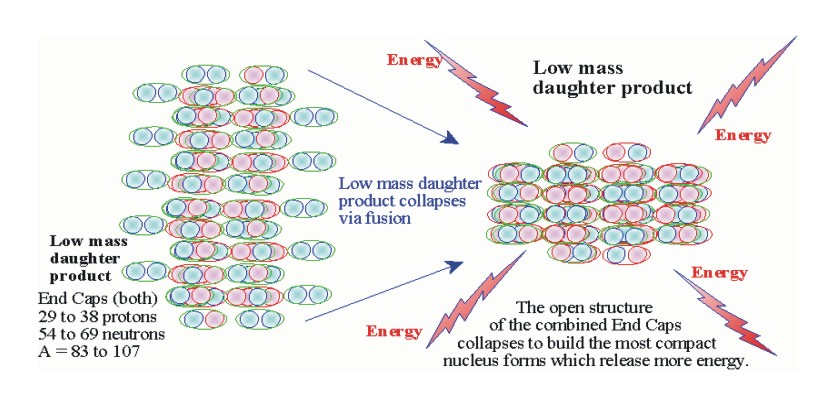
Fission Data
The fission yield chart shows the daughter product yield for U233, U235 and Pu239. In each case the heavy daughter product distribution remains the same as predicted by this model and the existence of a nuclear central kernel. The lighter daughter product shift to a higher A with a higher fissioning nucleus.
The graph on the right indicates the center of the daughter product distributions for element between A=228 through A=257. Note that the heavier daughter products distribution center about A=140 which is explained by the existence of the nuclear central kernel. The straight line increase of the A value of the lighter daughter product is the result of the extra nucleons being added to the end caps extending from the central kernel, not added to the central kernel. The structure of the nucleus defined by this model explains why fission is asymmetrical. The model indicates why fission occurs and why it starts where it does. All the aspects and question about fission are addressed by this model.
